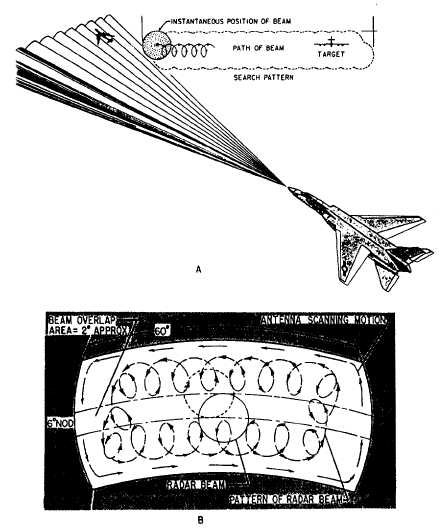purpose of the horizon line is to indicate aircraft
attitude. In automatic search, the horizon line
represents the earth’s horizon; when the aircraft rolls
or pitches, the artificial horizon banks or moves up or
down with the aircraft’s movement. This movement
of the horizon line is controlled by outputs from the
aircraft vertical gyro or stable platform.
Fire Control (Manual Search)
Manual search allows the operator to stop the
antenna from scanning and to direct it toward any
desired target detected during automatic search. Tilt
or elevation control of the antenna, which was
provided in automatic search, is still available in
manual search. In addition, control of the antenna in
azimuth is now available. In the operation of an
actual radar installation, control of the antenna in both
elevation and azimuth is a function of the hand
control. In the trainer, however, azimuth and
elevation controls are separate. The provision of
separate controls is of no great significance, except
for convenience of operation.
When manual search is initiated, the acquisition
marks bracket the range sweep line (B-trace), and
both the B-trace and the acquisition marks move
together in azimuth. The position of the acquisition
marks in range is also available in the manual search
mode. This allows them to be positioned anywhere
on the B-trace from zero to maximum range,
depending on range selected. For example, if the
radar is operating in the 0- to 10,000-yard range, and
a target appears at 5,000 yards, the acquisition marks
may be moved to bracket the target by use of the
range control.
The major display differences between automatic
search and manual search are that the acquisition
Figure 3-12.-A. Antenna scan pattern. B. Antenna coverage pattern.
3-13


